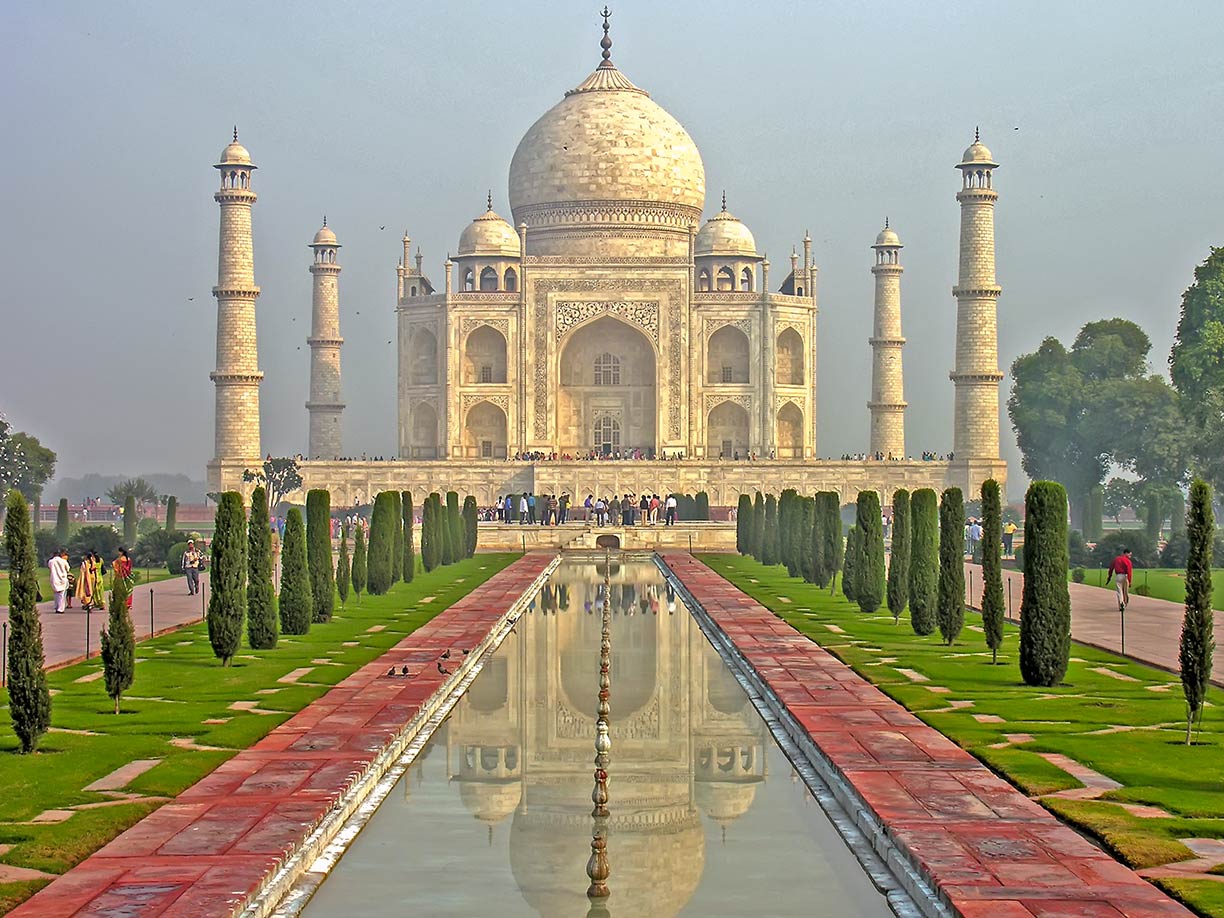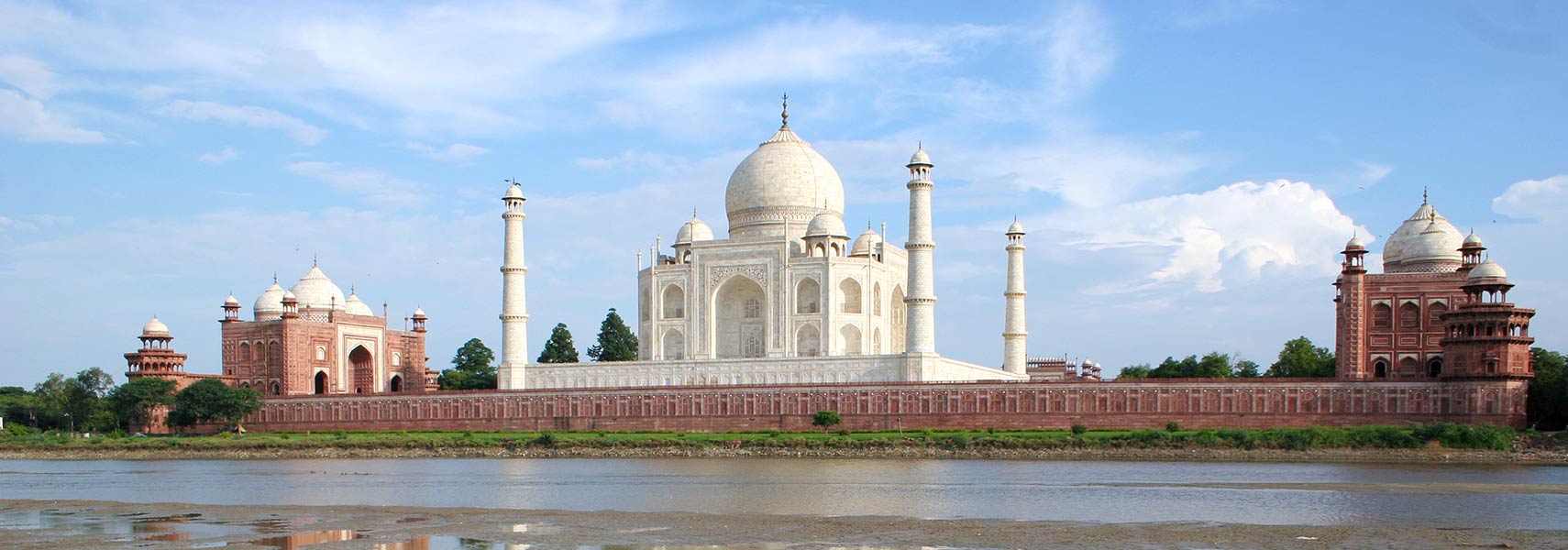About Taj Mahal (ताजमहल)
Annotated map of the Taj Mahal, the world's most famous tomb.
 Taj Mahal, the famous mausoleum in white marble is reflected in a pool flanked by cypresses.
Image: Dennis Jarvis
Taj Mahal, the famous mausoleum in white marble is reflected in a pool flanked by cypresses.
Image: Dennis Jarvis
On June 17, 1631, a Persian princess and the queen consort of the Mughal Empire, died shortly after giving birth to a daughter.
The princess given name was Arjumand Banu, she was the niece of Empress Nur Jahan, the most powerful and influential woman at court, in time when the Mughal Empire was at its peak.
Arjumand Banu was born in Agra on 27 April 1593; she was married, aged 19, to Prince Khurram, better known by his reign name as Shah Jahan, the fifth Mughal emperor, who reigned from 1628 to 1658.
Devastated by the death of his beloved wife, the Shah got down to work at once and built the Taj Mahal as his monument for eternal love. Or so the story goes.
Construction
The construction of the mausoleum began in 1632. Legions of architects, laborers, artisans, stonemasons, dome-builders, carpenters, artisans, sculptors, calligraphers, lapidaries and inlay artists went to work to build the most amazing monument India's.
The construction site on the right bank of the Yamuna River on the outskirts of Agra (the birthplace of the princess) was brimming with activity. Goods from all corners of India and various neighboring countries arrived. Construction material like marble, bricks, mortar, semiprecious, and precious stones was delivered by boats, oxcarts, caravans, elephants, donkeys, and horses. Traders, hawkers, star-mongers, curious spectators, beggars, and mullahs pursued their businesses.
To accommodate the army of workers, a whole town, named Mumtazabad (today Tajganj), evolved around the construction site, a settlement with living quarters, food stalls, meat, fruit, and vegetable markets, shops, warehouses, stables, a bazaar, and a caravanserai.
Taj Mahal
The Indo-Islamic architecture is full of symmetry, but the building complex of the tomb sits at the northern end of the garden, close to the river and not in the center. The location is intended to intensify the impression of greatness.
The domed centerpiece of the monument is the building that contains the tomb of Mumtaz Mahal. The multi-chambered cube with chamfered corners is made of a brick masonry structure (lakhauri) and clad with white marble, adorned with intricate marquetry (stone inlays or parchinkari). Four 40 m tall minarets at each corner complete the shrine. The whole structure stands on a square pedestal. To the west and the east side of the memorial are two red sandstone buildings that mirror each other. The building on the left is a mosque, the other on the right is known as Mehman Khana or "Jawab" (literally "answer"), the pendant to the mosque, possibly used as a guesthouse or as an assembly hall, but the purpose of the Jawab remains unclear.
The "crown of buildings" is a famous symbol of the Indian nation; it is a
UNESCO World Heritage Site 
since 1983.
Environmental Issues
The manufacturing hub Agra is in the Top 10 of India's most polluted cities. Air and water pollution, insects, acid rain, and tourists affect the marble of the Taj Mahal.
Tourist Traps
Be aware, poverty is still a significant issue in India; in the eyes of many Indians, tourists are wealthy. Like in many South-Asian countries, admission fees for foreigners are much higher than for locals. Watch out for petty scams. Local tour guides and photographers may try to rip you off. Overpriced handicraft shops, rickshaws, taxis, and restaurants.
Zoom out to find the location of Agra Fort; the 16th-century walled city is also a
UNESCO World Heritage Site 
To find a location use the form below.



